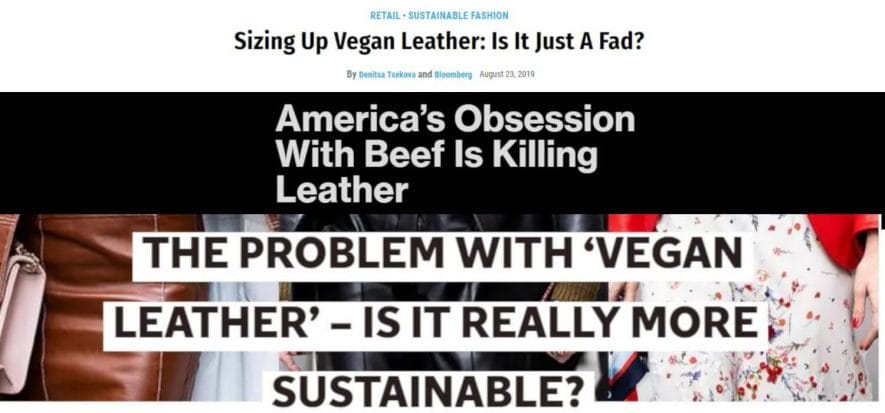English-speaking media have been realizing that something weird is going on in the fashion materials market: on the one hand leather, on the other hand its synthetic alternatives. It is no coincidence, perhaps, that Bloomberg, Fortune and The Independent all focused on the topic during August 2019. The analysis carried out by all of them hangs on a common denominator: looking at market trends, they are mostly driven by what consumers think and know about the origin of materials and the sustainability of manufacturing processes. The thing is that such knowledge is (often) imprecise.
Bloomberg analysis
While examining the recent history of fashion industry, Bloomberg have pinpointed three main reasons for leather downturn. Due to soaring prices, whose peak took place five years ago, several manufacturers decided to opt for alternative synthetic materials; in addition, athleisure wear enjoyed an outstanding boost (leather is not its core business); last but not least, vegan fashion, which is a patent opponent of leather, has become increasingly popular. “A number of buyers, who used to be fond of leather shoes and jackets in the past – remarked the US daily newspaper – are now keen on alternative synthetic materials, which mirrors a growing discrepant attitude of American consumers towards an article of clothing traditionally placed in their wardrobe”. Consequently, the market has been slowing down: in fact, small companies, in the industry, end up “out of business”. Ironically, enough, despite their aiming at safeguarding sustainability, even leather, which is a circular material, is discarded. Joe Brannan, manager at Twin City Hide, a trading company, pointed out: “At this point, we are taking a natural product to the dump”.
Fortune and The Independent are sceptical
Fortune wonders if success of vegan leather is going to be just a fad in the end, somehow a freaky market trend. The magazine has been emphasizing that consumers are gradually shifting their own sustainable greed from food to clothing, therefore selecting presumably green options, which are synthetic though. “Looks like a paradox”, remarked Fortune: although supply of materials deriving from biological (mostly vegetable) substances is increasing, a vast majority of alternative materials consist of plastic products. Likewise, The Independent goes straight to the point and speaks out: the “issue is about vegan leather – they say –: is it really more sustainable?” Designer Amy Powney (Mother of Pearl) answered the question rather bitingly: “When customers buy faux leather, they must be aware of the fact they are basically purchasing plastic”.











